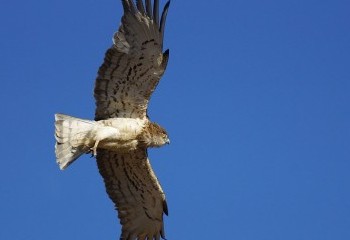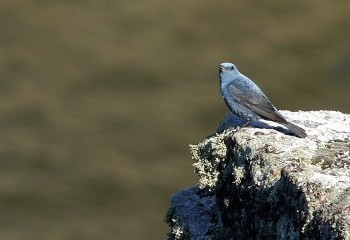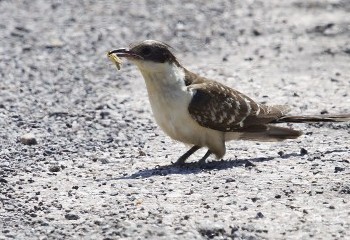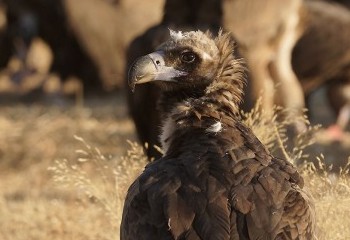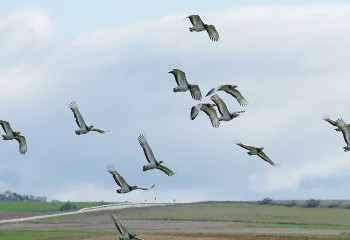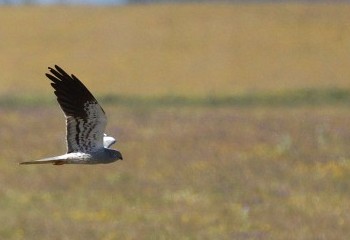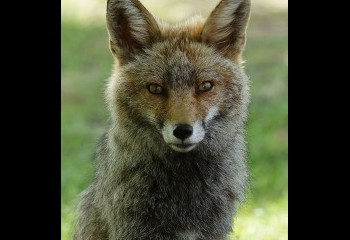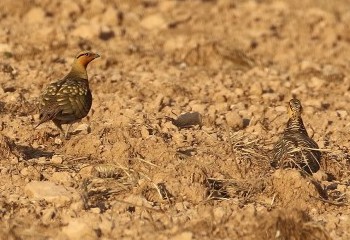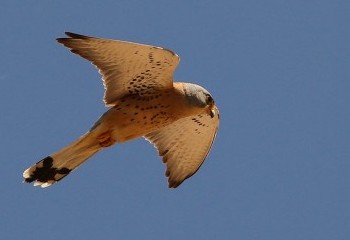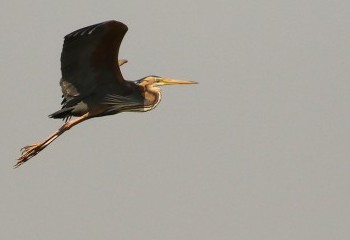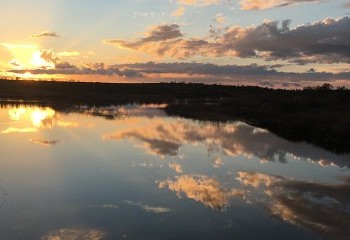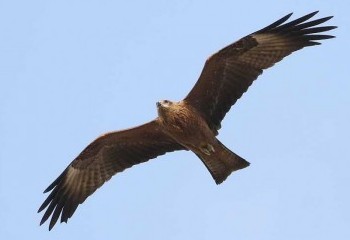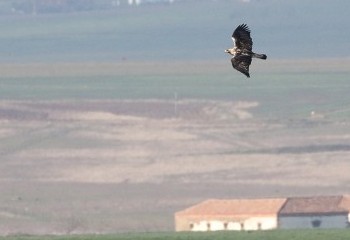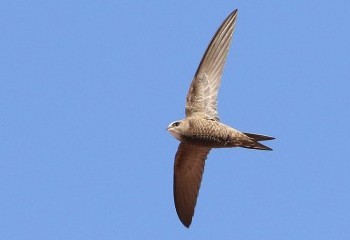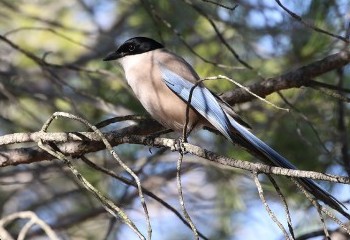EXTREMADURA
Raptors and steppe birds in Western Spain
- 7 Days
- From April 22 to April 28, 2024
- EXTREMADURA
- Tour Limit 7
- € 325 SINGLE SUP.
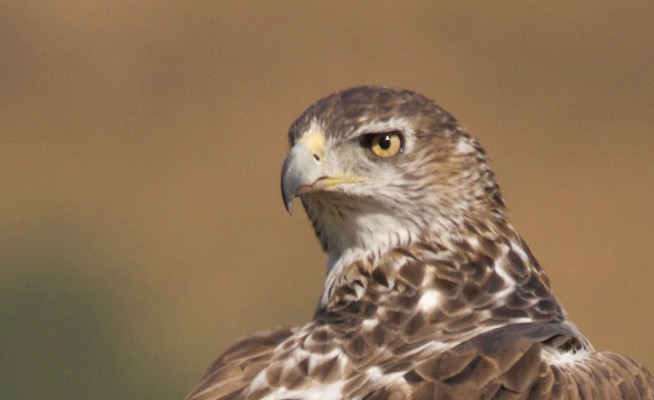
This is a tour mostly designed to get all the Spring specialities of Extremadura in a very relaxing way enjoying both wildlife and landscapes. An ideal tour for those who don't like much to change of base and forget the usual rutine of packing and unpacking several times in a week holiday.
Our hotel in Extremadura near Monfragüe besides offers very good 3 courses evening meals and a lovely selection of cheese, fruit, cereals, eggs and bread for breakfast. The sierras covered by Holm and impressive Cork Oaks and the never ending steppes produce some of the best preserved wild habitats in Europe.
If you like raptors this is your tour!
Some key species of this tour
Spanish Imperial Eagle, Bonelli's Eagle, Short-toed Eagle, Booted Eagle, Golden Eagle, Eurasian Griffon Vulture, Eurasian Black (Cinereous) Vulture, Egyptian Vulture, Eurasian Eagle Owl, Black-shouldered Kite, Great Bustard, Little Bustard, Black Wheatear, Pin-tailed Sandgrouse, Black-bellied Sandgrouse, Purple (Western) Swamphen, Little Bittern, Squacco Heron, Great Spotted Cuckoo, European Roller, European Bee-eater, Rufous-tailed Rock Thrush (only likely if visiting Villuercas Mountains), Western Orphean Warbler, Lesser Spotted Woodpecker, Western Bonelli's Warbler, Iberian Magpie...
The price includes
- Ground transport from Madrid airport in modern, fully seat-belted, air conditioned 9-seat vehicle
- 6 Nights accommodation with en suite bathroom near Monfragüe
- All meals inc breakfast, fantastic “tapas-raciones” lunches and evening meals + red wine in a moderate consumption
- Services of professional birding guide
- Basic travel insurance
- Bird checklist
- All taxes
Price doesn’t include
- Air fare (Easyjet, Ryanair & other companies operate daily flights from several UK airports)
- Extra drinks and other items of a personal nature
A detailed itinerary of this tour
Day 1 / April 22: Madrid airport - Calera y Chozas Plains - Torrejón El Rubio
Meet and welcome at Madrid airport and transfer to Extremadura. We will do our first birding on route in the Calera y Chozas plains (province of Toledo) looking for Great and Little Bustards with good chances for Black-shouldered Kite and Black-bellied Sandgrouse. This is a promising spot for Great Spotted Cuckoo too, while Sardinian Warbler, Lesser Kestrel and White Stork show well. In some seasonal ponds we might see Black-winged Stilt and some common species of ducks and waders. Dinner and accommodation in Torrejón El Rubio.
Day 2 / April 23: Torrejón El Rubio - Monfragüe National Park
After a good breakfast in our hotel we will drive straight to the probably the best place for watching raptors in the Western Palearctic. Travellers never forget their first visit to Monfragüe! We will see here Griffon, Eurasian Black (Cinereous) and Egyptian Vultures, Short-toed Eagles and with some luck Eurasian Eagle Owl. Golden, Spanish Imperial and Bonelli’s Eagle are all eagle residents with still good numbers in this spot. Along the banks of the rivers Tagus and Tiétar we will look for small passerines such as Western Subalpine and Sardinian Warblers, European Serin and Hawfinch. In the cliffs of Monfragüe we should also see Black Stork, Black Redstart, Blue-Rock Thrush, Rock Bunting, Red-rumped Swallow, Crag Martin and maybe the very scarce here, Red-billed Chough. It might be a good time to see the scarce and later migrant White-rumped Swift. Dinner and accommodation in Torrejón El Rubio.
Day 3 / April 24: Torrejón El Rubio - Trujillo & Cáceres Plains
This is usually one of the top days of the week providing some of the highlights of this tour. The Trujillo-Caceres plains lie between these two Medieval towns. The community of steppe birds and raptors are amongst the best in the country in spite of having suffered a severe decline in the last decade... We will have here our best chances for some of the specialities of the steppe habitats such as Stone Curlew (Eurasian Thick-knee), Black-bellied and Pin-tailed Sandgrouse, Montagu’s Harrier, Great and Little Bustards, Corn Buntings and Calandra Lark. We will have a break for our lunch at the Medieval town of Trujillo where a Lesser Kestrel colony. We have planned a little walk around Palaces and Churches built mostly in times of the conquistadors (XV - XVI centuries!). Amongst all of them Pizarro, who conquered Peru, is the town symbol, including a fine bronze statue in the main and nicest square. Almost every single building in the main square of Trujillo has its own particular birdlife... Pallind and Common Swifts, Crag and House Martin, Barn Swallow, Black Redstart, European Serin, White Stork and Western Jackdaw... all breed in this lovely place! Here we will enjoy one of our traditional “raciones” lunches (eagerly anticipated by our regular clients), after which we will explore a different section of the plains looking for other bird species including Great Spotted Cuckoo! Transfer to Torrejón el Rubio for our dinner and accommodation.
Day 4 / April 25: Torrejón El Rubio - Sierra de San Pedro
Running from North-West to South-East right between the two largest provinces of Spain, extends the Sierra de San Pedro mountain range, in what is probably one of the wildest corners of the Iberian Peninsula. This is a stronghold of one of the most threatened birds in Europe, the Spanish Imperial Eagle, which breeds here. The Eurasian Black (Cinereous) Vulture also breeds in good numbers in these “sierras” with the second largest nesting colony in Spain, just behind the well-known Monfragüe National Park. We will certainly have good chances to find Booted and Short-toed Eagles, while Black and Red Kites will be present during our visit. Bonelli’s and Golden Eagles are the other two big eagles present in Sierra de San Pedro, and we will try to spot their silhouettes amongst the numerous Eurasian Griffon Vultures. After a very enjoyable day we will return to our hotel in Torrejón El Rubio.
Day 5 / April 26: Torrejón El Rubio - Arrocampoco reservoir - Fields around Almaraz
The water supplied by the reservoir of Arrocampo is mainly used to cool down the motors of the nuclear power station of Almaraz. Although apparently not the best place in the world for birding this is however a great place to find some local “rarities” in Extremadura. This is for sure one of the few places in this regios where all Squacco and Purple Herons, Little Bittern, Purple (Western) Swamp Hen, Bearded Reedling and Savi’s Warblers breed. Besides we have had records of Great Bittern booming from the reedbeds and who knows if we can be lucky to see this elusive bird during our visit. The “dehesas” around Arrocampo are also a good place to see Great Spotted Cuckoo, Spanish Sparrow and beautiful Black-shouldered Kites... perhaps the best location to see this special raptor with crepuscular habits. We might also have some chances for Eagle Owl before returning to our hotel in Torrejón El Rubio.
Day 6 / April 27: Torrejón El Rubio - Vegas Altas rice fields
Today we will visit the rice paddies and dry steppes south of Trujillo. Amongst the most interesting species present here are Great and Little Bustards, Great Spotted Cuckoo, Black-bellied Sandgrouse, Black-shouldered Kite, Gull-billed Tern, Collared Pratincole, Spanish Sparrow and two introduced species, Red Avadavat and Common Waxbill. This is also one of the best sites in Extremadura to find waders, including nesting Kentish Plovers, as well as Little Ringed Plovers, Green and Common Sandpipers, etc... In the early evening we will travel back to Torrejón El Rubio for our last night accommodation in Extremadura.
Day 7 / April 28: Torrejón El Rubio - Madrid airport
Time for loading up our luggage and heading to the airport of Madrid stopping ahead for our last birding opportunities along the motorway. Birding stops today will depend on what we missed during the week so your guide will decide where to go before arriving to the airport in the early evening.
This itinerary might change according weather conditions or at discretion of our guide



